The world of transportation continues to change, and innovative electric bikes have taken off with metaphorical and literal speed. Electric bicycles may look like their manual counterparts, but their electric motors, pedal assist features, and hydraulic disc brakes put them in a class of their own. They’re used by commuters, vacationers, and adventurers, and some even include cargo capacities for long trips or family excursions.
Electric bikes and their powerful motors aren’t cheap, but they quickly save money (and time) on transportation costs. Some models cost as much as a small car, but affordable e-bikes aren’t as hard to find as you might think. There’s a wide range of styles and prices so that anyone who wants to lower their carbon footprint, save money on a daily commute, or climb hills without breaking a sweat can do it.
5 Best Electric Bikes of 2024
Best Electric Bike Overall:
Specialized Turbo Vado SL 4.0 EQ
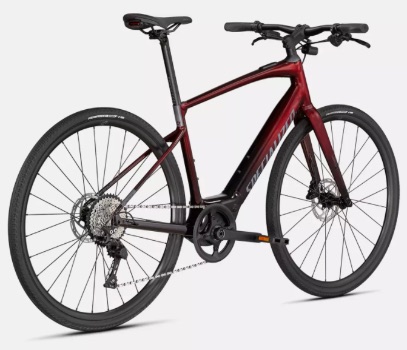
The Specialized Turbo Vado is one of the all-stars of the e-bike industry. It’s equipped for long distances but zips through commutes and trips to the store with ease. That power comes fully complemented with hydraulic disc brakes for quick, smooth stops from top speeds.
$3350 from Specialized.com
Best Electric Bike Overall: Specialized Turbo Vado SL 4.0 EQ
Best Folding Electric Bike: Enzo Folding Electric Bike
Best Electric Mountain Bike: Merida eOne-Sixty 800
Best Lightweight Electric Bike: Gocycle GS The All Rounder
Best Off-Road Electric Bike: Rambo Rebel 1000W Carbon XPS Electric Hunting Bike

Best Electric Bike Overall:
Specialized Turbo Vado SL 4.0 EQ
- Hydraulic disc brakes for quick, efficient stops
- Powerful mid-drive motor
- Large, 600-watt battery with long-range
The Turbo Vado e-bike balances powerful performance with features that make it a great commuter bike or suitable for longer distances. Both the motor and the 320-watt hour battery are housed in the down tube. That mid-drive motor falls low in the frame, powering the cranks to reduce drag, provide better weight distribution, and improve efficiency.
Daily commutes are no problem with this model. In fact, the battery has a predicted range of 120 miles, which means it should last several days on a single charge. When it does need a charge, the removable battery has easy access and pops out of the down tube. It features pedal assist that includes intuitive handlebar controls, so there’s not much of a learning curve. It’s one of the best e-bikes for all-around commuting or general riding for the price.
Tip: Do you live in a hilly area? Electric bikes make quick work of steep terrain. They can venture where normal bicycles wouldn’t dare and get you to your destination in half the time.
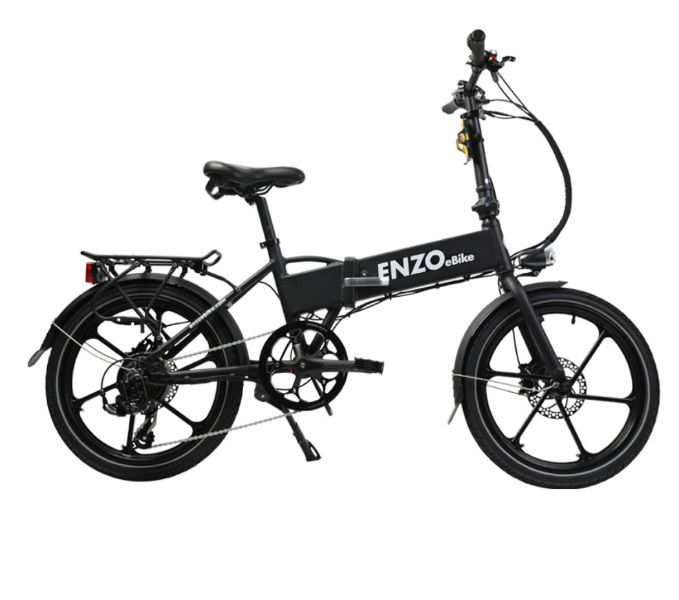
Best Folding Electric Bike:
Enzo Folding Electric Bike
- Offers both pedal assist and throttle on demand
- Easy to fold and includes telescopic stem and frame safety locks
- USB charger and phone holder on the handlebar display
If there’s anything foldable electric bikes should be able to do well, it’s fold. Collapsing the Enzo down to its small 33” x 25” x 14” folded size is fast and simple, but it’s just as easy to reassemble with frame safety locks and a telescopic stem. It’s a class 2 bike that offers throttle on-demand or pedal assist. That means you get the quick acceleration of a throttle without the need for a motorcycle license to ride it.
The Enzo’s throttle can take some getting used to since it’s located on the left side and has to be pressed up versus the usual down. Once you’ve got it going, you can switch to pedal assist or rely completely on the motor to zoom through city streets. It comes with a cargo rack, which can hold up to 55 pounds. Finally, the front display includes a USB charger and phone holder to make navigating easier.
Tip: Electric bikes need occasional repairs, just like normal bikes. Most repairs can be taken care of by the owner. However, issues with the throttle, battery, or computing system may require a trip to a repair shop equipped for e-bikes.
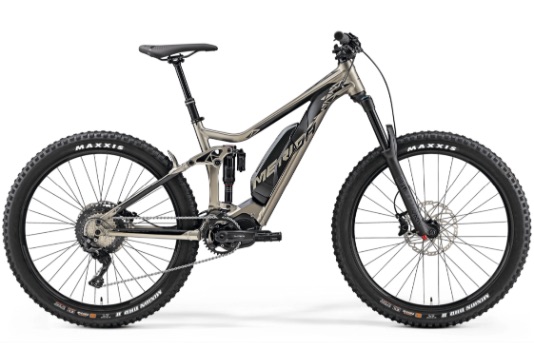
Best Electric Mountain Bike:
Merida eOne-Sixty 800
- Lightweight, detachable battery that balances well for better handling
- Nimble on steep downward slopes
- Internal cable routing prevents rattling of tubes and cables while riding
Electric mountain bikes climb and descend hills easier and faster. The Merida eOne-Sixty 800 has a balanced design that provides excellent control down steep slopes, and that’s where this bike shines — on the downhill. The extra control comes from a taller front end that’s slightly less useful on the uphill.
A lightweight battery, housed in a slim down tube keeps the center of gravity low for responsive handling. A slimmer rear tire stays calm on rough terrain, so this model takes less effort to maintain control. Excellent shocks keep the ride from getting too rough. Overall, this bike gives you good pedal assist and speed with a design meant to take you wherever you want to go and back again.
Tip: A two-component battery cover protects the Enzo’s battery by absorbing shock that travels through the down tube.
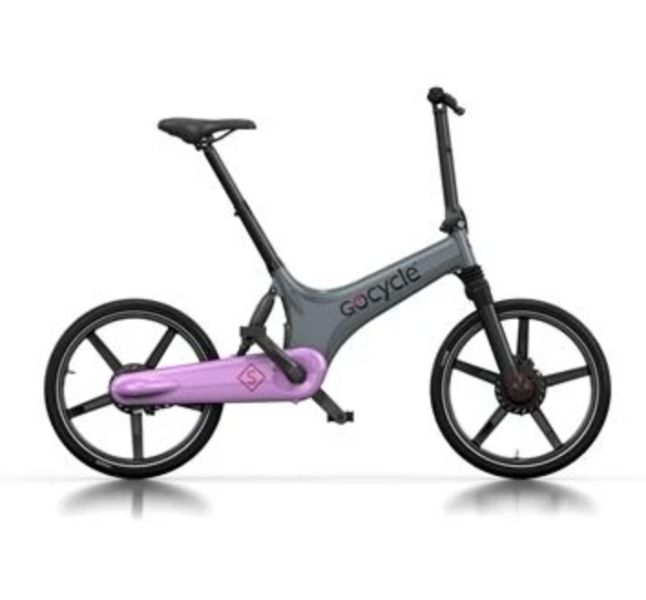
Best Lightweight Electric Bike:
Gocycle GS The All Rounder
- Weighs in at 36.3 pounds
- Foldable design
- Mobile app display only
The Gocycle GS The All Rounder takes the top prize when it comes to lightweight e-bikes. The magnesium wheels alone give it incredible durability and speed for the power output. This bike relies on a connection with the Gocycle app to activate controls and monitor speed and other control features. That means you’ll need a smartphone mounted to the handlebars to use this bike.
While this isn’t the lightest e-bike on the market, at 36.3 pounds, it’s much lighter than many models yet still offers excellent convenience features. An adjustable stem and seat let you get comfortable for longer rides. The small tires take some getting used to, but you can adjust the pressure to find a comfortable level of suspension. Overall, this is a lightweight design that folds down for storage and comes with a great interactive app.
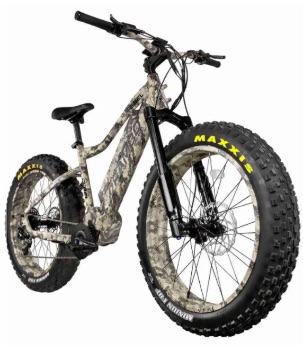
Best Off-Road Electric Bike:
Rambo Rebel 1000W Carbon XPS Electric Hunting Bike
- High-torque mid-drive motor for efficient power and control on rough terrain
- Includes rear rack, front and back fenders, and a headlight
- Fat tires for better traction through off-road areas
E-bikes are fairly new to off-roading, but they offer everything outdoors enthusiasts need when it comes to quiet transportation. Off-road electric bikes, like the Rambo Rebel 1000W, have fat tires for better traction and weight distribution on unpaved trails, even wet ones. A powerful 1,000-watt mid-drive motor powers this bike up steep hills and through backcountry where vehicles can’t venture.
A long-range lets off-roaders cover a wider area before returning to camp. You can use either the throttle or pedal assist along with eleven gears to adjust the speed and torque to handle both the weight of a load and uneven terrain. This model includes a rear rack but can also attach to a separately sold game trailer.
Tip: The Rambo Rebel 1000W has a sealed motor housing that cuts down on noise and protects the battery and motor from water and mud.
E-Bike Classifications
| Class 1 | Class 1 electric bikes are known as pedal assist or pedelecs. The motor provides assistance as the rider pedals the bike. The motor propels the bike up steep hills with less effort on the rider’s part. The rider can adjust the level of assistance. These bikes are allowed on sidewalks and bike paths and don’t need any special licenses. However, to stay in class 1, the bike cannot go over 20 mph in the United States or 15 mph in Europe. |
| Class 2 | Class 2 models are a low-speed throttle-assisted bike. A throttle propels the bike even if the rider does not pedal, much like an electric scooter or motorcycle. The speed increases as the amount of throttle increases, but the throttle cannot help propel the bike over 20 mph. Class 2 bikes are prohibited in some countries. However, in the United States and China, they can go anywhere a traditional bike can. |
| Class 3 | Class 3 e-bikes are known as speed pedelecs. These models have a maximum speed of up to 45 mph. For that reason, they’re usually classified as a motor vehicle and require the rider to have a special license. They’re also not allowed on trails or multi-use paths. |
Types of Electronic Bikes
| Electric Commuters | Electric Mountain Bikes |
| Any electric bike works as a commuter bike, but these models typically have road tires and rear racks to carry light cargo. They have lightweight aluminum frames and may be foldable, so they can be carried up to a workspace or stored under a desk. | From the handlebar height to the wheel width, electric mountain bikes are meant to provide extra control while traversing the trails. They’re powerful enough to help riders climb intense trails, while the frame designs promote optimal balance and weight distribution. |
| Electric Road Bikes | Folding Electric Bikes |
| Electric road bikes differ from commuters in that they have a longer range for extended road trips. Smooth road tires, lightweight frames, and sleek designs add to the value of these bikes. If you really want to cover ground, one of these bikes is an excellent choice. | Folding electric bikes aren’t as powerful as their non-folding counterparts, but they’re incredibly portable. Some are lightweight, while others weigh up to 50 pounds or more. The folding process is simple with some and not with others, so look closely at the folding instructions before buying. However, models that are easy to fold become small enough to fit in a bag that can be carried up or downstairs, making these a great option for commuting. They may not be as fast as non-folding models, but they’re still more efficient than standard bikes. |
| Electric Cargo Bikes | Electric Off-Road Bikes |
| Do you want to use an e-bike for grocery shopping, overnight trips, or family outings? Electric cargo bikes are versatile in that they can be converted into multi-rider models, carry child trailers, or outfitted to hold cargo. They’re pricey, but may be perfect in an urban environment where you’d rather use a bike than a car. | Electric off-road bikes offer the steering and mobility of a bicycle with the climbing power of a motorcycle. Their wide tires grip rocky and rough terrain for better climbing power while redistributing weight when loaded down with equipment or cargo. These models have excellent power and battery life, so outdoors enthusiasts can extend their camping area and accessibility. |
Electric Bike Features to Consider
| Battery Range | E-bike batteries and motors come with varying specifications that affect the battery’s range. The range depends on the power and size of the battery, the location of the motor (front hub, back hub, or mid-drive), terrain, and how much you use the motor for assistance. In general, bigger, heavier batteries have a further range than smaller, lighter models. You’ll have to find the right balance between battery power and weight based on the kind of riding you want to do. You may run through batteries faster on an off-road or mountain electric bike, so it’s a good idea to have a charged backup battery with you if you know you’ll be pushing the bike’s range limits. |
| Foldable | Foldable e-bikes sacrifice power and efficiency in favor of compact, lightweight foldability. Many people use these bikes as a commuting alternative. However, they’re valuable enough that you may not want to leave them chained to a bike rack in a parking lot. Foldable models collapse down to sizes small enough to store under a desk or in a nearby storage closet at work. They’re also easier to store at your home when not in use. However, check out a few videos on how to fold the bike. Some models fold down in a minute or two, while others take 10 minutes and may require you to have the manual nearby to do it correctly. |
| Motor Type |
|
| Pedal Assist vs. Throttle | There’s an ongoing debate in the e-bike world about which is better, pedal assist or throttle. One isn’t inherently better than the other, but one might be better for you than another based on how you want to use the bike. Pedal assist models have a sensor that monitors how much the rider pedals. The motor then provides a burst of power to assist each stroke, taking the rider farther. Most bikes allow the rider to control the assist level. That way, you can adjust the assist based on how much battery power you have left and how much of a workout you want to get. Bikes with a throttle work like a motorcycle. The rider activates the throttle, which is located on the handlebar, to activate the motor and power the bike forward without the rider having to pedal. Some models only have a throttle, while others have both a throttle and pedal assist. Class 2 bikes with a throttle can be used without a license, but those that go over 20 mph qualify as a class 3 bike and must be registered like a motorcycle. |
| Tires | Class 1 and 2 e-bikes don’t need any special tire considerations. They don’t run over 20 mph, so they don’t put the tires under any more stress than a standard bicycle. They provide a smooth ride even at these bikes’ maximum speeds. However, class 3 bikes, also known as speed pedelecs, can take the bike up to 45 mph, which puts extra stress on the tire and rim. These models have tires designed for heavier loads and higher torque. They typically operate under higher pressure and have a stiffer feel. |
| Accessories | E-bike manufacturers offer a wide range of upgrades and accessories like front and rear lights, an extra lithium-ion battery, rear racks, mobile phone holders, and motor and battery upgrades. These bikes can quickly get pricey as accessories and upgrades mount up. However, if the accessory provides better safety and usability, it’s probably worth the additional investment. |
Safe E-Bike Riding Tips
|
Frequently Asked Questions
Are front hub or back hub motors better?
Front and back hub motors perform about the same, but they change how the bike feels and handles. Front hub motors feel like the bike gets pulled forward. They can take some getting used to and are prone to spin-outs because of how the rider’s weight leans to the back of the bike.
Back hub motors feel more like a regular bike, but they’re more complicated to install and maintain because they’re near other important gear. They also add weight to the rear of the bike, which can make them more difficult to handle.
You’ll have to decide which provides a more comfortable ride for you based on your riding style and how you plan to use the bike. However, mid-drive motors seem to be the gold standard.
What makes high-end electric bikes better?
Not all high-end e-bikes are better than entry-level models. However, around the $7,000 mark, the bikes tend to have a longer battery range because of more powerful motors and lightweight frames. Depending on the design, these models may have a higher top speed, especially if they’re a class 3 bike. Some have extra accessories or configuration options, like the ability to carry heavy loads on a rear cargo rack.
Do I have to have a smartphone to use an e-bike?
Some electric bikes require the use of a companion app on a smartphone that connects with the bike’s sensors. The smartphone then displays the bike’s speed, power use, and battery life. These kinds of displays offer more in-depth information and control than a standard e-bike display. However, some e-bikes have their own display, so there’s no need for a smartphone.
Final Advice
Electric bikes continue to grow in popularity as people search for ways to reduce their carbon footprint and speed through long commutes. These bikes may be an investment, but for many people, they’re well worth it for the time and money they save on commutes or by skipping the car for errands and days outside.


